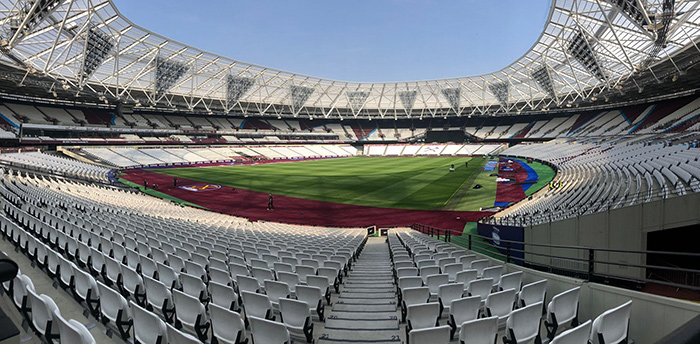Sanitise The Site, Not The Experience

By Simon London, CEO and Founder, KidRated.com
The London Stadium has been on quite a journey this pandemic.
With its large-scale, 60,000 seat capacity, it became the very first venue to host a Premier League football match after the winter lockdown I don’t think any of us will forget in a hurry. With safety absolutely paramount, it was able to welcome around 10,000 fans to its ground.
Clearly, this didn’t happen overnight and required a good deal more thought and preparation than running a vacuum cleaner around the place, mowing the grass and opening the gates.
Of course, it was originally built to host the Olympics. It evolved to house the Happy Hammers and UK Athletics. And in the last week or so, it even became a mass vaccination centre for anyone living in the surrounding areas to receive their first jab.
But for something that used to be so normal - welcoming fans through the doors - the planning and execution was vast: 1,500 pieces of additional signage, 70 hand sanitisers, planning Covid-safe walkways and zones, organising the authorities in case of any incidents.
This kind of preparation doesn’t come without costs.
Back in December, the English Football League - in the midst of discussions with government on bringing back crowds to games - stated that “club finances...remain under extreme pressure”. Without a doubt, anything that requires a stadium be that sports or entertainment, has been hit very hard in the pocket this year. The London Stadium alone lost £29 million in 2019-20.
Only a hair’s breadth away, a new entertainment venue is still in the planning stages. The deeply controversial MSG Sphere - a giant golf ball-like structure that, if built, would sit right next to Westfield and in between Stratford’s rail tracks. Questions have been raised about how Covid-safe this venue would be when capacity - we hope - returns to more normal levels at West Ham games, and separate crowds congregate at Stratford Station. Let alone how sensible it is to pursue building such a structure at such a testing time for the live entertainment industry.
Which brings us to the question: what should facilities managers be considering now? What should they prioritise in 2021 and beyond?
As we edge gingerly out of lockdown (but hopefully stay in the Euros), facilities managers will rightly be considering the options to maximise and recoup revenue, and that doesn’t necessarily mean bums on seats.
Of course, capacity will begin to increase. The UK government and UEFA reached a deal meaning that Wembley will be at 75% capacity for the Euro finals. But this alone cannot cover or indeed future-proof income streams for any business in the stadium sector.
Positive online reviews, and partnerships with affiliate sites can and do convert into feet through the door. Often this is as simple as paying a subscription fee to be listed on the site, and secure promotion on social streams and outreach content which translates into traffic, and converts into ticket sales. Building and maintaining an online presence is key, particularly if we do need to go into another lockdown in future, although I am sure everyone hopes dearly that this won’t be the case.
In fact, Rapid Retail recommends connecting strongly with families – with a view that they will be the fans of tomorrow. It recommends special family zones to facilitate this. Similarly, cross- and up-selling merchandise, and creating – it says – a unique talking point, are all ways to increase footfall.
Of course, ultimately, it is the overall experience that matters to visitors - and that’s even more important than ever. But with a few carefully considered decisions, facilities managers and the stadiums they serve can reap rewards.











































